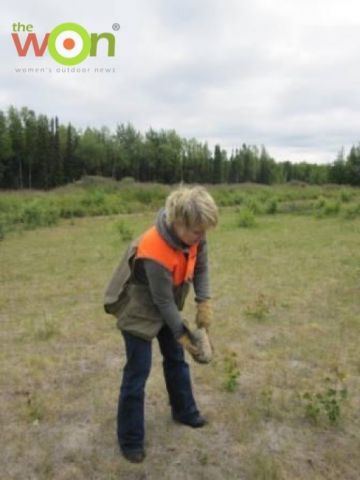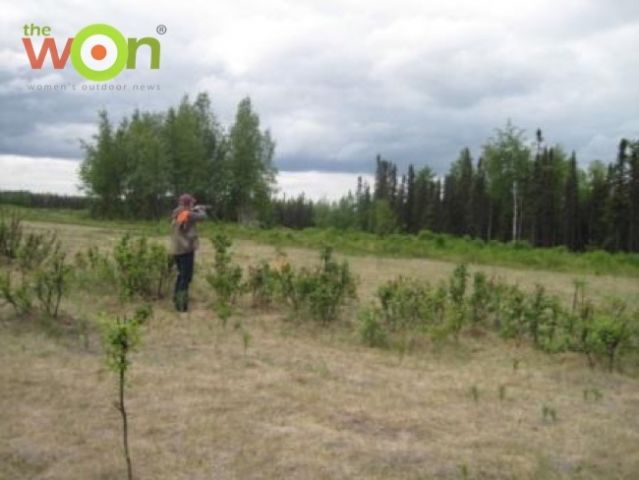It wasn’t until my second year bird hunting with an English setter that I realized no book or friendly advice had prepared me for the entirely different set of characteristics that came with setters. A friend told me pointing dogs were like geniuses, which meant they were always straddling the border of brilliant and crazy. My setter was born with skills, but it was my job to hone those skills. There’s an adage I’d heard but never felt until I was faced with the exuberance of a bird dog: “Old age and treachery beats youth and skill every time.” I needed some dog-training tricks up my sleeve.
My introduction to formal bird dog-training was at Falcon Ridge Upland Game Farm in Point McKenzie, Alaska, where dogs learn the skills necessary to hunt in the field and perform at field trials. There, a scant farm life has given way to flying enclosures, random wash tubs for the dogs and a pigeon pole. Every structure was in need of painting, and a retired Allis-Chalmers tractor served as a hitching post. The appearance of elegance was squandered on a single prized species—the bird dog.
On the day I was there, I joined two other owners and their dogs for the training. We learned how to plant live birds for the dogs. There are many ways to do it with varying degrees of style; this is how we did it, step by step:

(Steven Meyer photo)
1 Purchase live birds. Make sure the birds are good fliers—usually those raised in flying pins. Chukar (shown) work great on inexperienced dogs whereas a pheasant might spur the dog. Quail aren’t always great fliers; they tend to not fly far and allow the dog to catch them (the worst thing!).

(Steven Meyer photo)
2. Place your anxious bird dog out of sight of the field in which the birds will be planted.

(Steven Meyer photo)
3. Take a bird to the spot you plan to plant it and tuck its head under its wing.
4. Hold the bird’s legs out straight.

(Steven Meyer photo)
5. Swing the bird, head down, 10 to 20 times in a wide circle. This will put the bird to sleep.

(Steven Meyer photo)
6. Tuck sleeping bird into brush.

(Steven Meyer photo)
7. Mark the spot. A piece of orange tape works well.
8. Release the dog on a check cord and follow the dog to field with a shotgun (preferably an over/under).

(Steven Meyer photo)
9. Once the dog finds the bird and is on point, walk to the bird and wake it up with the toe of your shoe. This will prompt the bird to fly.

(Steven Meyer photo)
10. SHOOT! (The dog should hold.) Note: The shooter should be well-trained in firearms safety and a good shot.
A real hunt brings a number of variables into play—terrain, weather and the availability of private or public land. But training with live birds gives both the hunter and the dog an opportunity to practice field etiquette, which is as simple as being safe and sporting. There is not a set of written laws to follow, but a way of doing things that reflects a love of the sport, enhancing the enjoyment of all involved. If a few tricks help to speed the process, I’ll use them. (If you know of a trick that can get the dogs to clean the birds once they are shot, please e-mail me at cunningham@yogaforduckhunters.com.)
Christine Cunningham is a lifelong Alaskan, author and outdoor columnist known for her contributions to outdoor magazines and her commitment to creating opportunities for women to connect and share their stories. Her first book, “Women Hunting Alaska,” profiles some of Alaska’s most outstanding female hunters. View all posts by Christine Cunningham